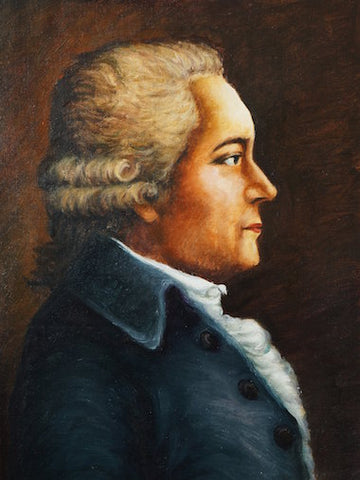Dittersdorf, Carl Ditters von (1739 - 1799)

Carl Ditters was one of the most prolific and versatile of the Viennese contemporaries of Haydn and Mozart. He was also one of the most engaging professional musicians of his generation and his famous autobiography, completed two days before his death, reveals a man of charm, vivacity and learning.
Ditters grew up in comfortable financial circumstances and was able to enjoy the benefits of a good general education at a Jesuit school in addition to receiving private tuition in music, French and religion. He began violin lessons at the age of seven and through the influence of his second teacher, Joseph Ziegler, was appointed as a member of the orchestra at the Benedictine church on the Freyung several years later. On 1 March 1751 he joined the musical establishment of Prince Joseph Friedrich von Sachsen-Hildburghausen and began a more disciplined course of violin study with Giuseppe Trani. Trani was impressed with his pupil's early attempts at composition and commended him to Giuseppe Bonno who offered him instruction in Fuxian counterpoint and free composition. Ditters remained in service until 1761 when the Kapelle was dissolved following the Prince's departure from Vienna to assume the regency in Hildburghausen. Along with the other musicians, Ditters was taken into the employ of Count Durazzo, Theatre Director at the Imperial Court.
Ditters's prolonged contact with dramatic music during the early 1760s through his membership of the theatre orchestra proved highly influential on his development as an artist. Nonetheless, when his contract with Durazzo expired in the winter of 1764 he chose to accept the post of Kapellmeister to the Bishop of Grosswardein, recently vacated by Michael Haydn, rather than work under the authority of Count Wenzel Spork, Durazzo's successor, with whom he had personal difficulties. In his new post Ditters assembled a good orchestra and a small company of singers. He began to compose his first vocal works, including the oratorio Isaaco and several operas, in addition to maintaining a steady output of instrumental music.
In the course of his travels following the dissolution of the Bishop's Kapelle in 1769, Ditters met his next patron, Count Schaffgotsch, Prince-Bishop of Breslau. He agreed to an extended stay at the Prince-Bishop's castle at Johannisberg probably little expecting that he would spend much of the next twenty-odd years there. Although isolated somewhat from the main stream, Ditters's reputation did not suffer by his being based at Johannisberg. His instrumental music circulated widely and his vocal music, in particular his operas, operettas and Singspiels, enjoyed great popularity in Vienna and elsewhere. Through the Prince-Bishop's offices Ditters was created a Knight of the Golden Spur in 1770 and, two years later, was granted a certificate of nobility by the Empress Maria Theresia after which he adopted the additional surname 'von Dittersdorf'.
After the Prince-Bishop's death in 1795 Dittersdorf received a small pension barely sufficient for his needs. Handicapped by arthritis and short of money, he was offered lodgings by Baron Ignaz von Stillfried on his property in Bohemia remaining there with his family until his death on 24 October 1799.
Dittersdorf wrote fluently and attractively in all genres and the number of prints and manuscript copies of his works which survive today bear witness to his great contemporary popularity. Within his instrumental oeuvre, the symphonies, of which there are approximately 120 works, hold a particularly important place and provide the best insight into the development of his compositional style.
Like Haydn's symphonies, those of Dittersdorf were written over a period of several decades and reveal an extraordinary wealth of novel and convincing solutions to problems of form. One very distinctive quality the two composers share - and one for which they were roundly criticized by pedantic critics in their own lifetimes - is wit. This is revealed both on a subtle, musical level by deceptive phrase lengths, rhythmic surprises and deceptive cadences and, more obviously in Dittersdorf's case, by his penchant for writing descriptive music. The programmatic symphonies, of which the twelve based on extracts from Ovid's Metamorphoses are the best known, represent a natural line of development for a theatre composer and it is perhaps surprising that neither Haydn nor Mozart attempted works in a similar vein.


